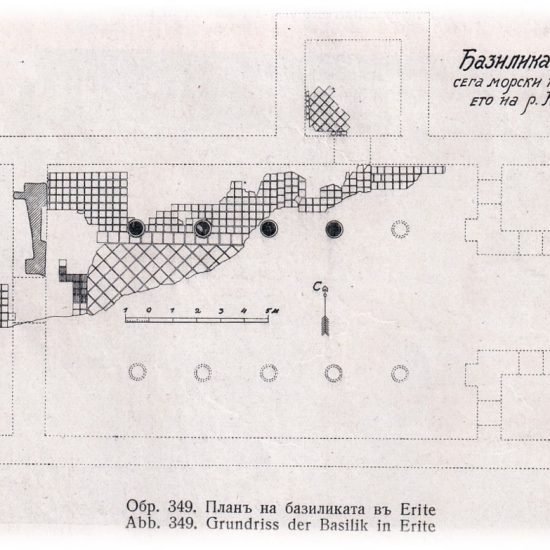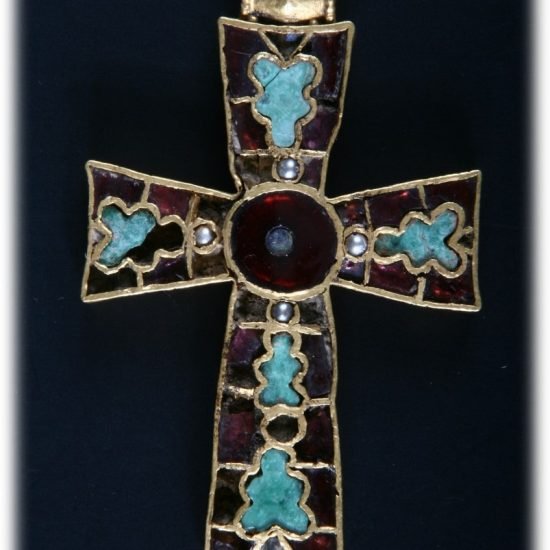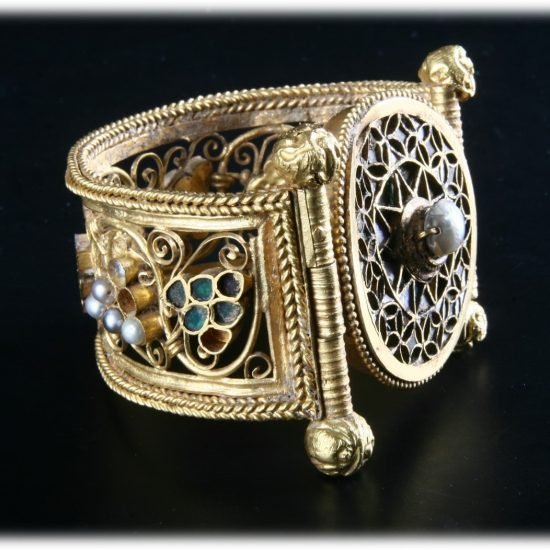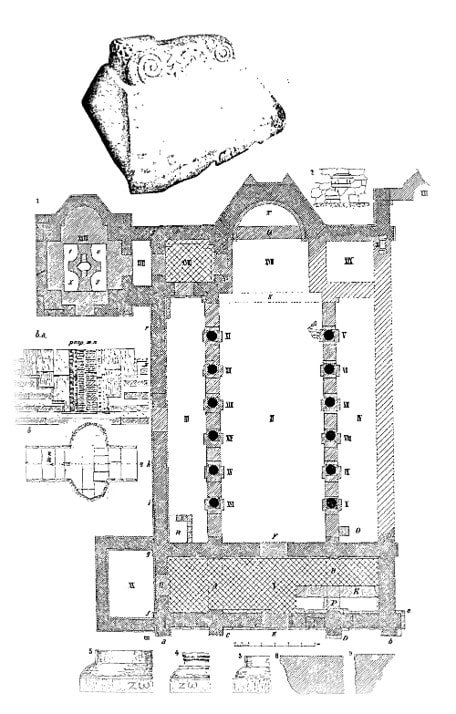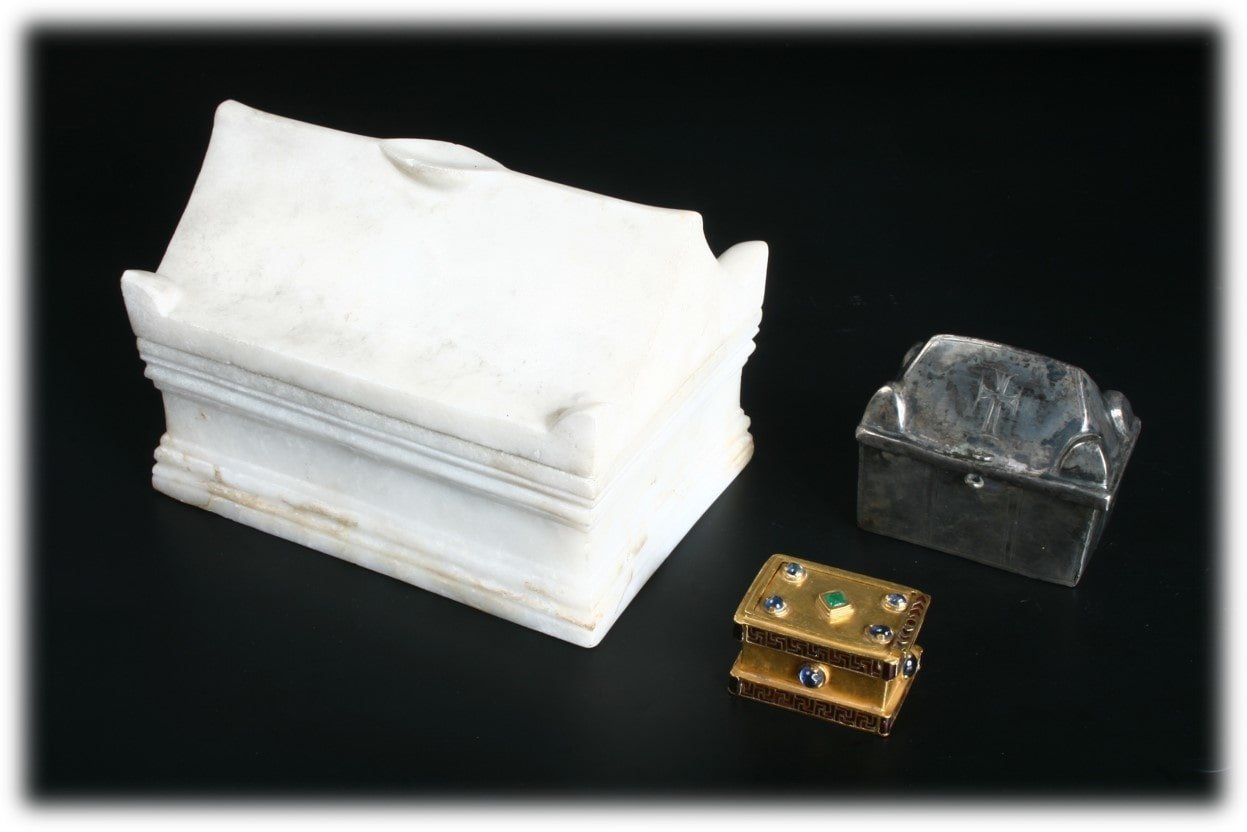Odessos
per person
Odessos was established as an apoikia on the western coast of the Pontos Axeinos (the Black Sea). The founders of the polis arrived from Miletus as a result of the ancient Hellenic migratory activity. The town has been known under the same name from the second quarter of the 6th c. BC to the first quarter of the AD 7th c. The newly arriving settlers adopted the name they found, which had existed since before their establishment in this place.
As the archaeological research shows, the first settlers occupied the northern slope of a small bay, protected from the north and northeast winds by a small cape – Varna Cape, a continuation of what is today the breakwater of the port. Probably from the late 6th or early 5th c. BC, Odessos began to grow by absorbing the territory north of the gulf.
During the Classical Age, Odessos was included in the borders of the Thracian Kingdom of Odrysai. A change occurred during the time of King Philip II of Macedon, who went to war against the Scythian king Ateas and reached Odessos. Then – in 339 BC, the town came under Macedonian rule. It continued during the reign of his successor Alexander III the Great and later in the days of his deputy in Thrace – Lysimachus. In the course of the war for the succession of the Alexander’s Empire with the rest of the Diadochi, Lysimachus died in 281 BC and the nominal Macedonian rule over Thrace and the Pontic coast was put to an end.
Odessos probably recognized the authority of the briefly flourishing Getae kingdom of Burebista, between 55 and 48 BC. The town then led an independent policy until it fell under Roman rule in 28 BC, initially annexed to the Roman province of Macedonia, and in AD 15 to Moesia. Under the Antoninian dynasty, Odessos experienced an economic boom. Its incorporation into the Roman Empire played a significant role in its cultural and economic rise. The population increased and the town expanded in area. During the Hellenistic and Roman Ages, silver and bronze coins were struck in the town mint.
Odessos, with its harbour, rose as an important imperial economic and political center on the western coast of the Black Sea. Due to the good economic conditions and sea trade in the 5th – 6th centuries, many immigrants from the rich provinces of the Empire settled in Odessos – from Bithynia, Phrygia, Syria and the Aegean islands, especially after the repulse of the Huns, which testifies to the stabilization of the situation and the lively trade by sea. The epitaphs known so far from the necropolises of Odessos show that people of various professions settled in the town like ship owners, doctors, merchants and artisans.
With a special novel dated May 18, 536, Emperor Justinian I created the association of quaestura exercitus, whose governor with the rank of prefect was based in Odessos. He exercised military, judicial, administrative and financial authority. The quaestura included the provinces of Moesia Secunda, Scythia Minor, Cyprus, the Cyclades and Caria. Probably the basis of this union was the need to improve the sea defense in this part of the Black Sea and the possibility of the transfer of troops through sea communications and adjacent harbours.
In the 5th – 6th c., Odessos was a large Christian center, and a significant number of churches and monasteries were built in the town and its surroundings.
A hagiographic work, which is largely legendary, reports that the town of Odyssopolis of Moesia was visited by Apostle Andrew, the baptizer of the peoples along the Black Sea shore. According to Epiphanius, in the mid 1st c., Apostle Andrew the Baptist consecrated the bishop of Odessos, Amplias, who was greeted in a letter by Apostle Paul. The same bishop was later martyred and canonized. Amplias is one of the few saints of Christianity who found their martyrdom in Odessos. The other one is Dorotheus, Bishop of Tyre, who, according to Theophanes the Confessor, during the persecutions against the Christians under Emperor Julian the Apostate (i.e. 362), was murdered at Odessos. Nevertheless, it is possible these reports to be legendary and related to the idea of raising the authority of the Odessos Church by consciously transferring martyrdom events from other regions of the Empire.
Sure information from the written sources about the ecclesiastical community of Odessos and its leading bishops are dating from the second half of the 5th and the 6th c. From that time the names of several bishops are known – the Thracian Ditas in 468, and John in 518. It is accepted with some doubt that sometime around this time the Bishop of Odessos was Severus, elected Patriarch of Antioch (512 – 538). Martin became bishop of Odessos by 538. He is mentioned in one of the novellas of the Emperor Justinian I, in which Odessos is given a special attention. Bishop Martin held a personal meeting with the Emperor in 544 and managed to obtain his consent for the church and citizens of Odessos to sell and buy church property for charity and mainly for the redemption of captives.
In the second half of the 6th c. Bishop of Odessos was Daniel known from an epitaph found in one of the Christian necropolises in the town. Probably the Bishop of Durostorum Dulcisim, who died after him, was also buried in the same tomb. Their epitaphs, in a different lettering, have been engraved on the same tombstone. Other tombstones found in the necropolis of Odessos reveal also the names of church officials, such as Presbyter Peter and his son the Reader Bonos. Still another tombstone reveals the name of the leader of the Syrian church community in Odessos in the 6th c. – Father Markilius.
The Epiphanius (pseudo-Epiphanius) list from the first half of the 7th c. reports for the first time that Odessos was no longer a bishopric under the Metropolis of Marcianopolis but became the center of a newly formed autocephalous archbishopric under the Patriarchate of Constantinople. The territory of the Odessos archbishopric bordered to the south with the old bishopric of Hadrianopolis, also transformed into an autocephalous archbishopric – Mesambria.
FORMAL ANALYSIS
In the course of 5th – 6th c. many churches were built in Odessos and its surroundings. Almost all of them are of a considerable size and rich interior decoration of imported marble, and some with mosaics. In the ancient town itself, the remains of seven early Christian basilicas have been discovered so far, and only one has been excavated almost entirely. Seven more have been found around the town, some of which have been studied. The Kaempfer capitals discovered by chance in various places in Varna are dating mainly from the mid 5th to the second half of the 6th c. This is clearly the period of the most active church construction in Odessos.
The largest and most richly decorated was the basilica on Khan Krum Street in Varna. It reveals three periods of construction. In the early 5th c., it was a small, three-nave and single-apse church, with a narthex. It had a mosaic floor, murals and wall mosaics. The marble interior decoration was made of imported marble of different colours, including the most expensive one – porphyry. In its place, another, larger three-nave single-apse basilica was built, with a narthex and an exonarthex (measuring 40 x 16 m). The church was richly decorated with marble, and its floor was covered with multi-coloured mosaics. It had a synthronon – proof that it was the Episcopal basilica of Odessos and two altars. In a crypt under the second altar – south of the apse, a marble reliquary was discovered, in the shape of a small bottle with a lid. It contained holy relics – a fragment of the skull of a young woman – an unknown saint and a badly decayed part of the True Cross. The basilica was destroyed after the mid 5th c. About the late 5th c., a new one was again built over the remains. The new basilica was of the same plan, but perhaps then a large baptistery was added, circular in plan. Its floor was covered with marble slabs, and in the narthex and exonarthex – with square bricks. A half-ruined brick tomb built under the floor was discovered in its north aisle. It seems possible that one of the bishops of Odessos was buried there in the 6th c.
There was another early Christian basilica at the corner of Tsar Kaloyan and Knyaz Dondukov Streets. It had also a beautiful marble decoration, its columns being decorated with marble crosses. Judging by a marble capital found nearby in the style peculiar of the time of Emperor Theodosius II (402 – 450), it should be dated to the first half of the 5th c.
One of the pagan temples of Odessos, located on the corner of San Stefano and Chernorizets Hraber Streets, was reconstructed into a Christian church. Its dating about the mid 6th c. is suggested by the fragmentary capital of Proconnes marble with a monogram found there – a custom mainly characteristic of the age of Justinian I (527 – 565).
It is not possible to describe all the early Christian churches that graced Odessos. We shall also mention only a few, built outside the fortress walls of the ancient town. Detailed descriptions can be read in the numerous publications on the studies from the late 19th c. to the present day.
South of the city, in the site of Pirinch Tepe, there was one of the most beautiful suburban Christian temples of Odessos (measuring 24 x 18 m). It was a three-nave basilica, with a narthex and a three-walled apse. To the northeastern side a baptistery was added with an apse and a built-in cruciform piscine with steps. The church had a marble floor, partly in the opus sectile technique, as well as wall mosaics. Inside, it was built with marble columns and capitals, and a frescoed plinth shaped like a quadrae construction. It existed in the 5th – 6th c. There are two stages of construction. The second stage was probably from the time of Justinian I, when the baptistery was added.
In the Dzhanavara area, near Odessos, the church has one nave (28 m long and 31 m wide). It has an internal apse and four symmetrically projecting rooms in the corners, with two internal staircases to the second floor. An atrium with a colonnade was located in front of it from the west. Three of the corner rooms have multi-coloured mosaic floors decorated with geometrical patterns. The central nave and the northwestern room, which served as a baptistery, have a marble floor covering. The baptistery piscine is of a cruciform shape with stairs, lined with marble. A large pulpit rose in the middle of the central nave. The church creator or benefactor was buried in a tomb beneath it. In the crypt under the altar, a set of three reliquaries was discovered – marble, silver and golden ones, placed inside each other and wrapped in silk fabrics – unique in the early Christian world. The golden reliquary kept a fragment from the wrist of an unknown saint. The church was built in the early 6th c. and burned down at the end of the same century. The researchers assume it was related to the Syrian colony of Odessos. The presence of a synthronon in the apse suggests that this community had their own bishop.
HRISTO KUZOV
- Basilica at Khan Krum street, Varna PLANS. HRISTO KUZOV
- MAP OF ODESSOS, 4th – 6th CENTURIES PLANS. HRISTO KUZOV
- Mosaic from the Bishop’s Basilica (Khan Krum Street, now in the Varna Archaeological Museum) © PHOT. KRASSIMIR GEORGIEV
- Mosaic from the Bishop’s Basilica (Khan Krum Street) © PHOTS. KRASSIMIR GEORGIEV
- Alabaster reliquary found in the Bishop’s basilica (Khan Krum Street) © PHOT. KRASSIMIR GEORGIEV
- Basilica in Erite site outside the fortress walls of Odessos
- Basilica in Pirinch Tepe
- Church in Dzhanavara site © PHOT. HRISTO KUZOV
- Church in Dzhanavara site © PHOT. HRISTO KUZOV
- The set of reliquaries of Dzhanavara © PHOT. KRASSIMIR GEORGIEV
- Dzhanavara marble reliquary © PHOT. KRASSIMIR GEORGIEV
- Dzhanavara golden reliquary © PHOT. KRASSIMIR GEORGIEV
- Dzhanavara silver reliquary © PHOT. KRASSIMIR GEORGIEV
- Varna Treasure. Pectoral cross – encolpion, gold, garnet, malachite. 6th c. © PHOT. KRASSIMIR GEORGIEV
- Varna treasure. Bracelet, gold, pearls, glass, enamel. 6th c. © PHOT. KRASSIMIR GEORGIEV
Tour Location
Odessos
| Other monuments and places to visit | Aladzha Rock Monastery |
| Natural Heritage | |
| Historical Recreations | |
| Festivals of Tourist Interest | |
| Fairs | |
| Tourist Office | Visit Varna |
| Specialized Guides | Yes |
| Guided visits | Yes |
| Accommodations | Plenty of |
| Restaurants | Plenty of |
| Craft | |
| Bibliography | |
| Videos | |
| Website | Visit Varna; trip advisor |
| Monument or place to visit | Most of the churches of Odessos are now below the pavement of modern Varna. Open to public are only the Bishop’s basilica on Khan Krum Street and also the church in Dzhanavara. The reliquaries and all other artefacts found are on display in the Varna Archaeological Museum. Some of the mosaics are on display in the museum at Holy Trinity Rock Monastery (13th – 14th c.) 17 km north of Varna. |
| Style | Byzantine style in local variants |
| Type | Church architecture |
| Epoch | 5th – 6th centuries |
| State of conservation | Insufficient |
| Degree of legal protection | Archaeological Museum - Varna |
| Mailing address | archaeological@museumvarna.com rimvarna@abv.bg |
| Coordinates GPS | 43°12′41″N 27°54′40″E |
| Property, dependency | Ministry of Culture – Republic of Bulgaria |
| Possibility of visits by the general public or only specialists | General public visits |
| Conservation needs | Very necessary |
| Visiting hours and conditions | Archaeological Museum Varna Open 10 a.m. – 5 p.m. (winter time closed Saturday and Sunday) Aladzha Monastery Open 10 a.m. – 5 p.m. (no days off) Both churches are open to public – no entry needed |
| Ticket amount | Varna Archaeological Museum 10 BGN; Aladzha Monastery 5 BGN. Discounts depending on the number of visitors, age, etc. |
| Research work in progress | |
| Accessibility | Good for the Bishop’s basilica Good for the church in Dzhanavara – in the outskirts of Varna, need to climb a slight height |
| Signaling if it is registered on the route | |
| Bibliography | Selected works Минчев, Ал. Ранното християнство в Одесос и околностите му. – Bulletin of the National Museum of Varna, Varna, 22 (37), 1986, 31 – 42. Минчев, Ал. Одесос през късната античност (IV – началото на VII век). – In: 10 книги за Варна, 2006. Варна, 2007, 9 – 113. Плетньов, В. Одесос, Варна и районът в античните и средновековни извори (V – XII век). Varna 2014. |
| Videos | |
| Information websites | archaeo.museumvarna.com |
| Location | In town and its outskirts |








